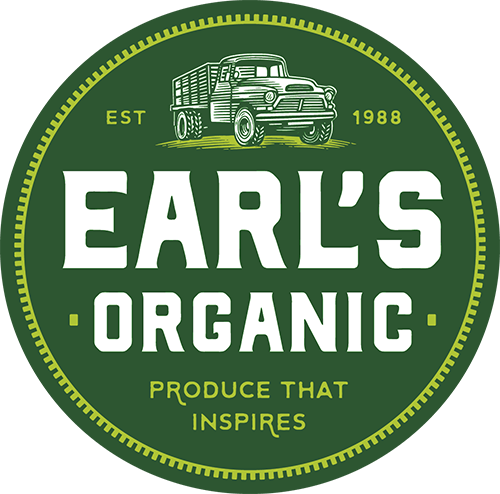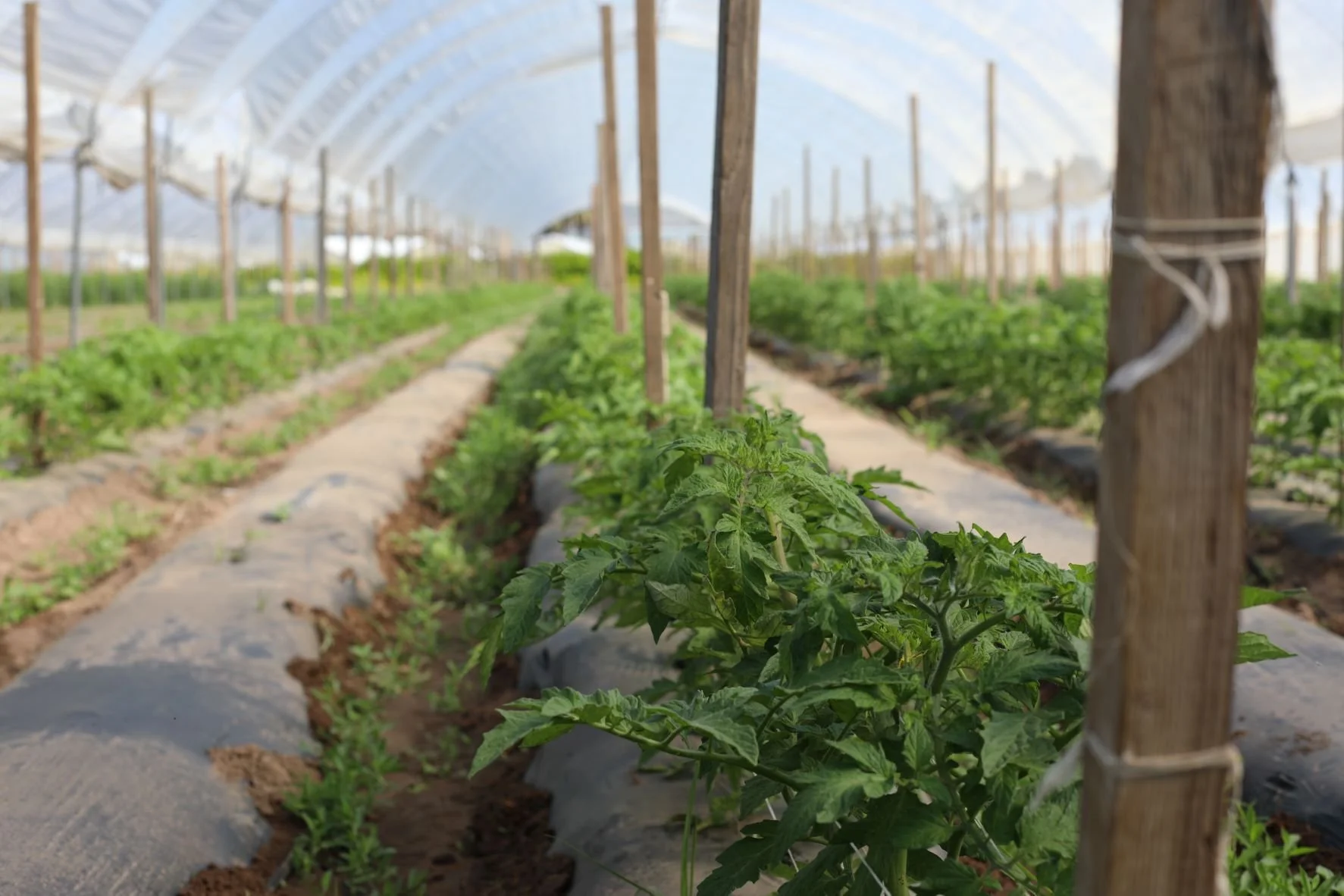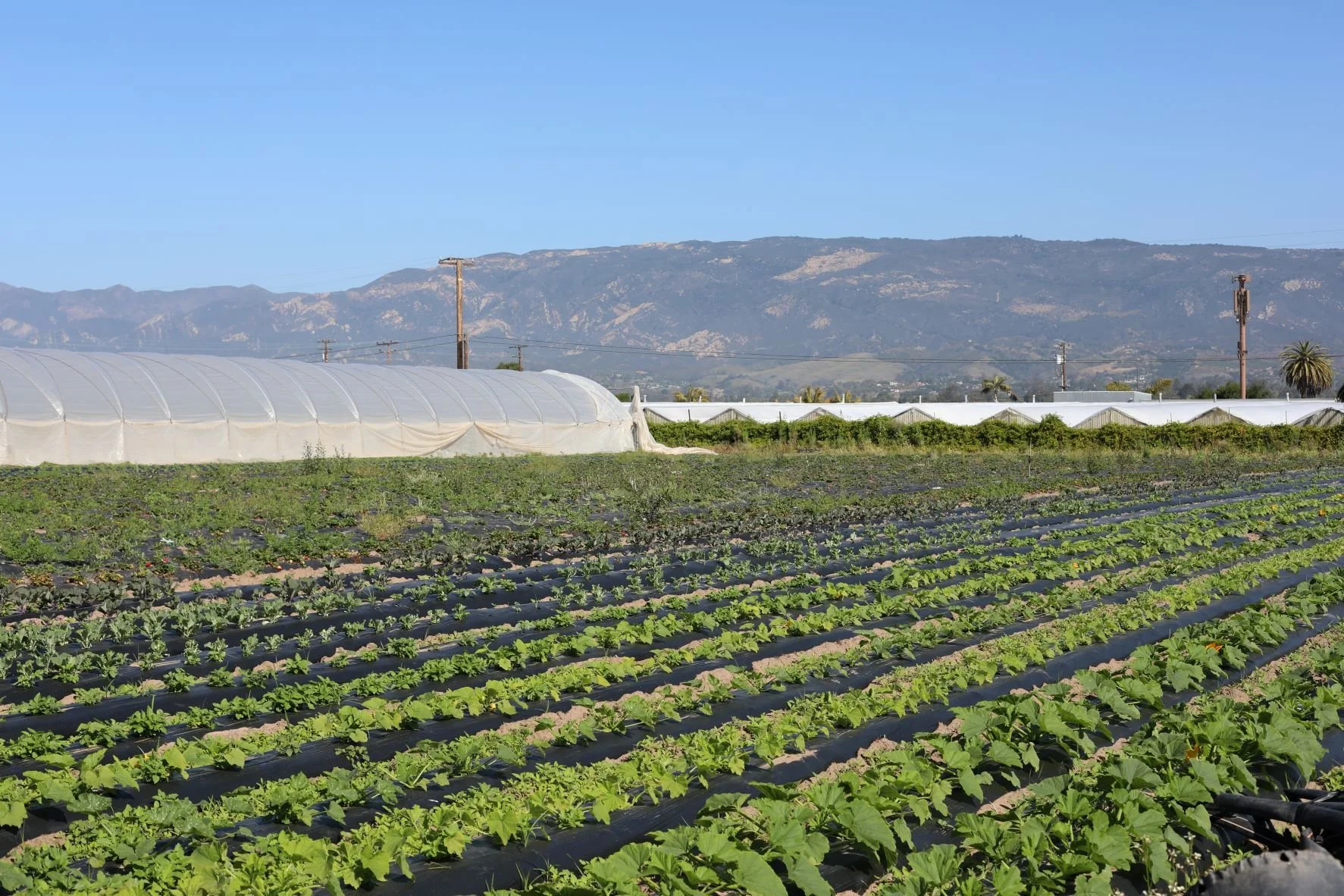FARM TOUR 2022: SUNRISE ORGANIC FARM
You may be familiar with the sweet, crisp carrots from Sunrise Organic Farms, or recognize their label on the boxes. But as always, there is plenty more to see when you look deeper: our latest visit with the farmers highlighted their personal touch – a story of family, community, and innovation, of the hard work and good humor needed to make it as farmers in this era.
We met Andrew, Eric, and Jesus at their seeding operation in Santa Barbara proper. It's part of a smaller plot, where they’re growing market strawberries, hedges of passionfruit, along with early cucumbers and tomatoes. That’s one of three plots in the area, supplemented by another six in Solvang for a total of 240 acres – an impressive amount of growth since their start in 2015. With their long soil beds framed by the silhouette of mountains and scattered palm trees reaching for the sun, theirs is an idyllic example of Southern California farming. But the beautiful locale doesn’t mean it’s easy!
In the greenhouse we got to see row after row of baby pepper plants, along with eggplant, melons, and lettuces, all ready for transplant. Jesus, the principal farmer for Sunrise, explained the different varieties he was trying this year as we surveyed the starts. The tables were entirely full – to avoid gaps, they strive to plant lettuces and other quick-growing crops every 7-10 days in succession. And we’ll be lucky enough to enjoy those longer-growing fruits in a few short months.
Tomatoes in the greenhouse
This guy knows the land; as Andrew told us, Jesus has an extensive book of notes about years past – what grew best, where, which varieties, and why – and he continuously rotates crops based on this history. After years farming with John Givens (along with Eric), he collaborated with Andrew to found Sunrise. And their operation is tightly knit: we also met Jesus and Erics’ wives, who take care of the seeding for the entire operation. They have 35 full-time employees to maintain the bulk of planting and harvesting. Uncertainty also claims a spot on their team: “if you wanna gamble, you’re gonna gamble on farming!” Andrew joked as we walked by cucumber plants that had seen better days.
After tasting some Sweet Anne strawberries (some of the sweetest around, indeed), we made our way to one of their larger plots in the area, surrounded by suburban neighborhoods. They found the land through their community connections – with access to ample well water, they were shocked to find such a prime parcel sitting fallow for a decade. They prepped the soil with compost and other amendments, ploughed in winter cover crops, and laid the plastic. Long, hot crops will make a new home there: corn, tomatoes, squash, and peppers. And to make harvesting easier, maximize yield, and ensure proper airflow, they interplanted the tall tomato plants with lettuces.
From there, we drove up through the Santa Rita hills to visit their larger plots, only to be surprised by rows of gorgeous, 13-month-old artichokes. It was hot in the hills, and the scent of the plants filled the air while we walked by their side. We passed purple snap peas and mustard greens, before darting across the busy road towards the carrot fields.
They expect their future on the plot to last another four to eight years, but the land carries its own history as well: formerly a hog farm, the old farmers used to grow their own grain. Now, in between the lines of carrots and up against the leeks you’ll find a field of oats attempting to grow again. With that and a smattering of other weeds to contend with, Andrew is always experimenting with weed suppression measures. Cultivation in succession and planting into plastic helps (aiding water retention, too), but hiring extra labor to weed the beds is often too expensive – there are times when they must let a crop go and move on.
But Andrew is always thinking ahead anyway (as farmers tend to do). If the artichokes were any indication, they keep innovating with new crops and new techniques to stay ahead of the market. He showed us his massive carrot harvester, and a new planting attachment. This one is key for efficiency: rather than manually changing tractor gears for each kind of crop, he can adjust the spacing at the touch of a button. We also saw their small but mighty cooler – it’s hard to believe so much quality produce passes through it, but if anyone can make it happen, it’s Andrew and his crew.
There’s a strong legacy of growers down in Santa Barbara and its surrounding counties, one that is continually being nourished and expanded upon by folks like the crew at Sunrise. It felt as if knowledge is shared freely, along with an intimate connection to the land and the climate.





